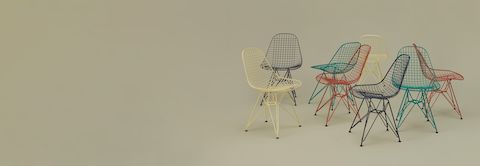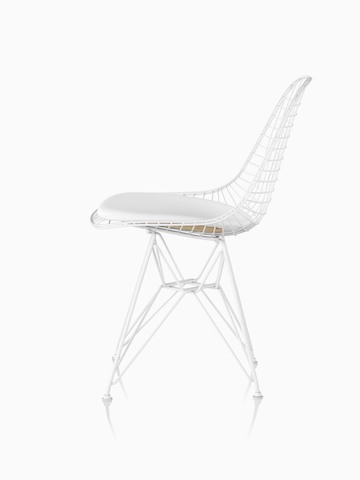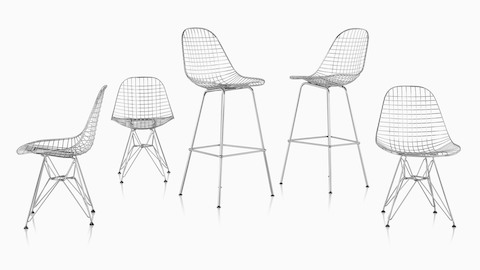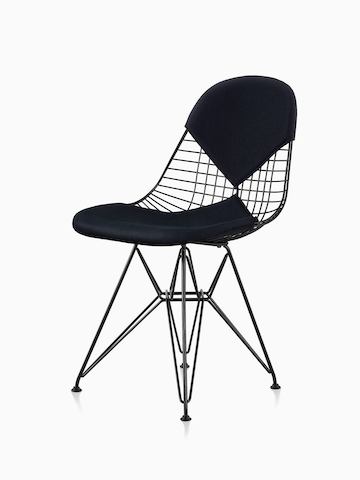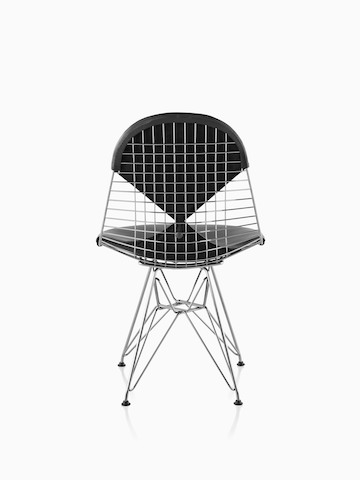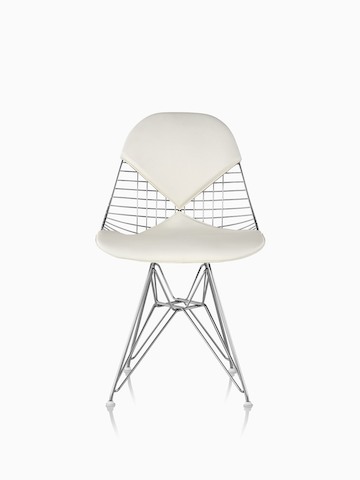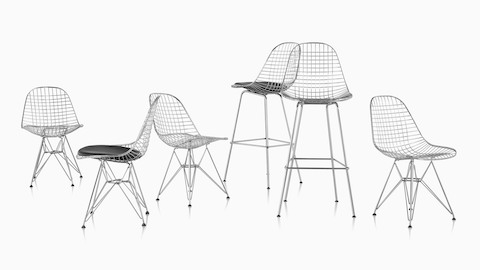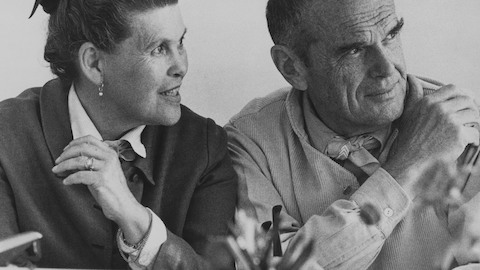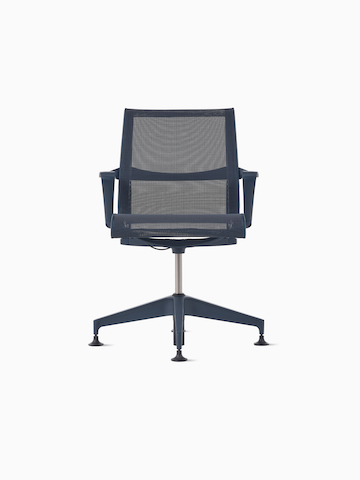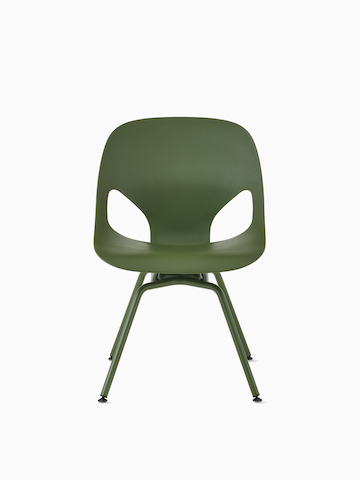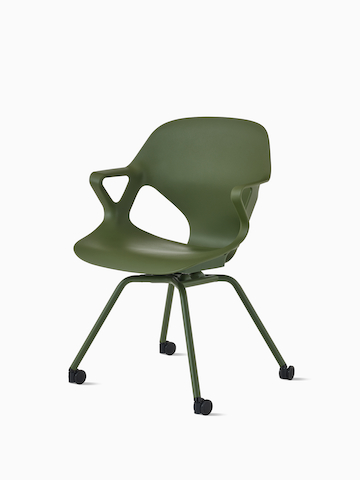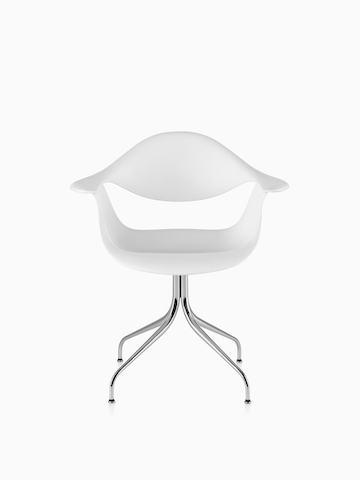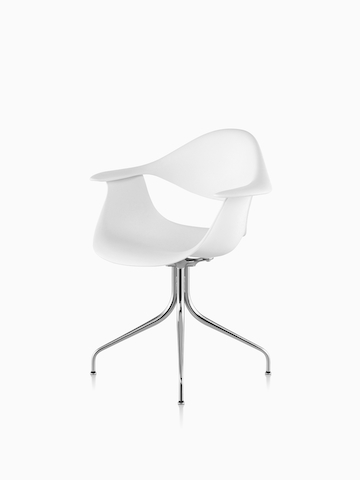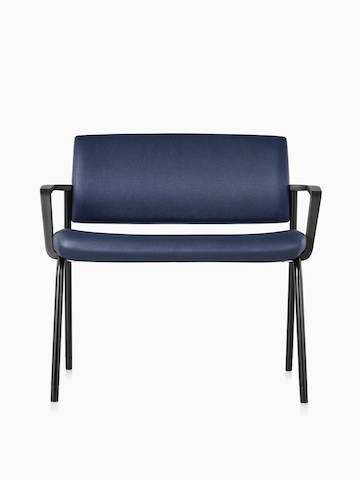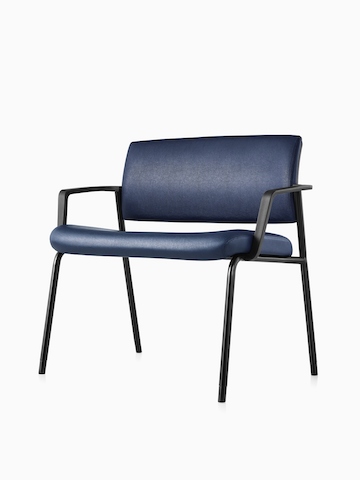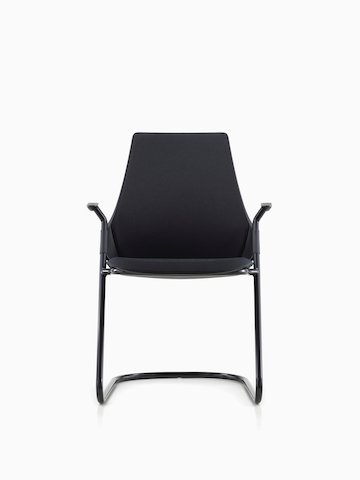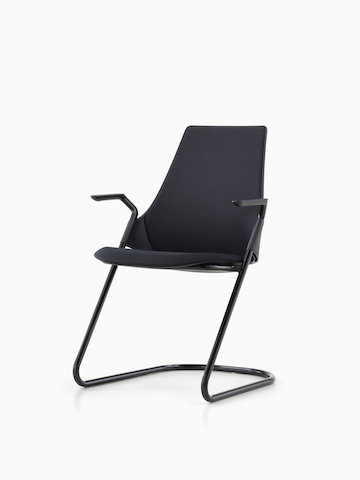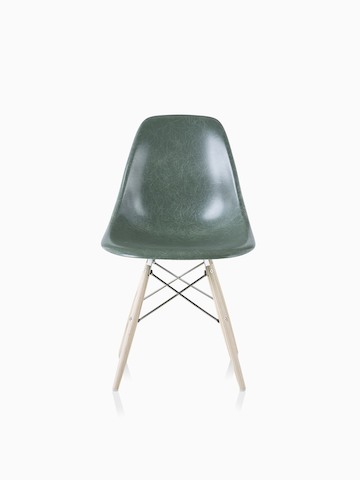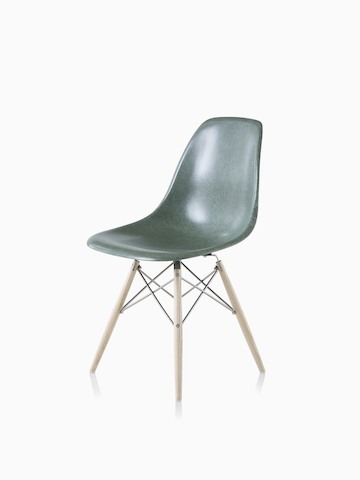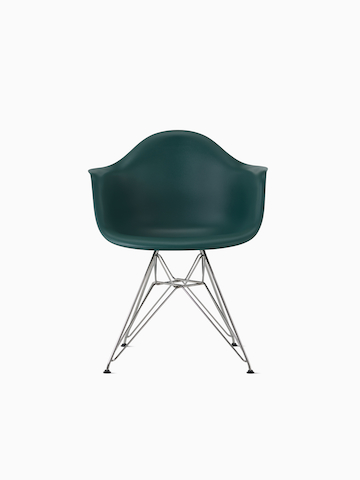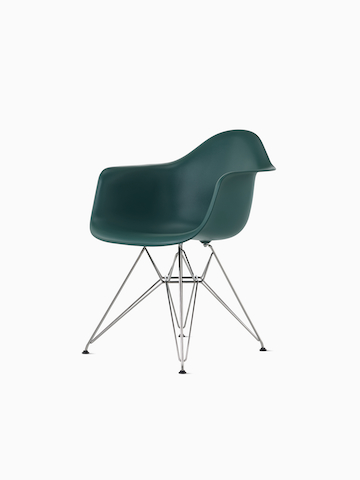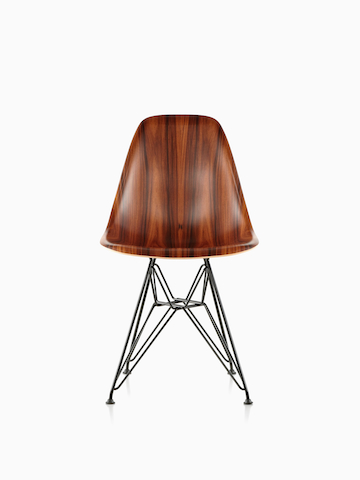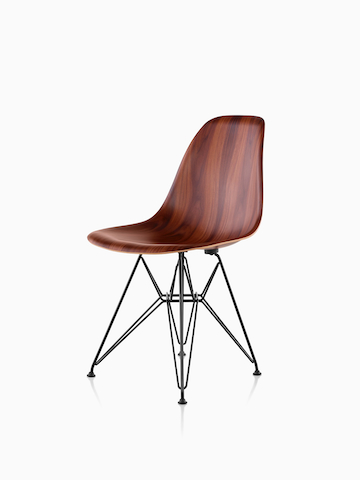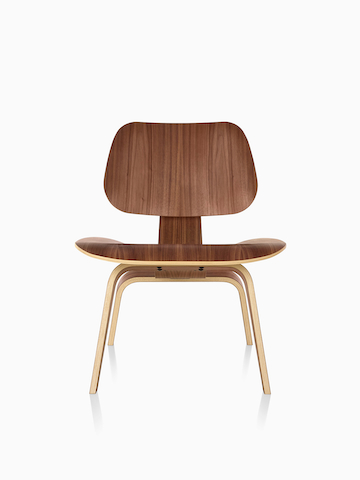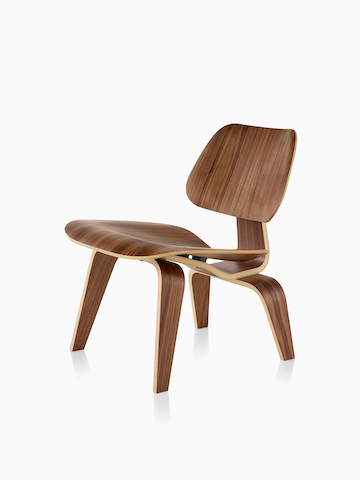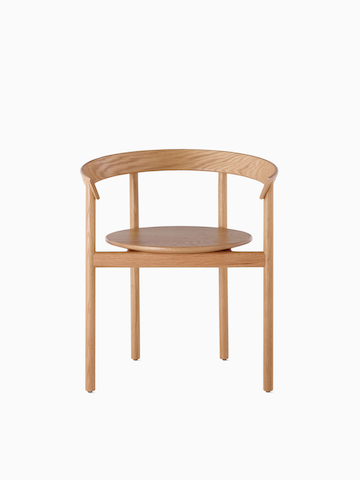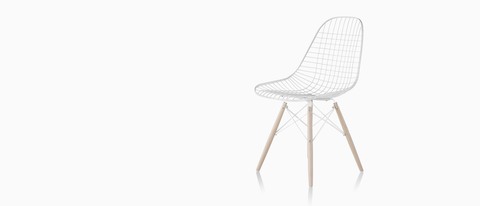
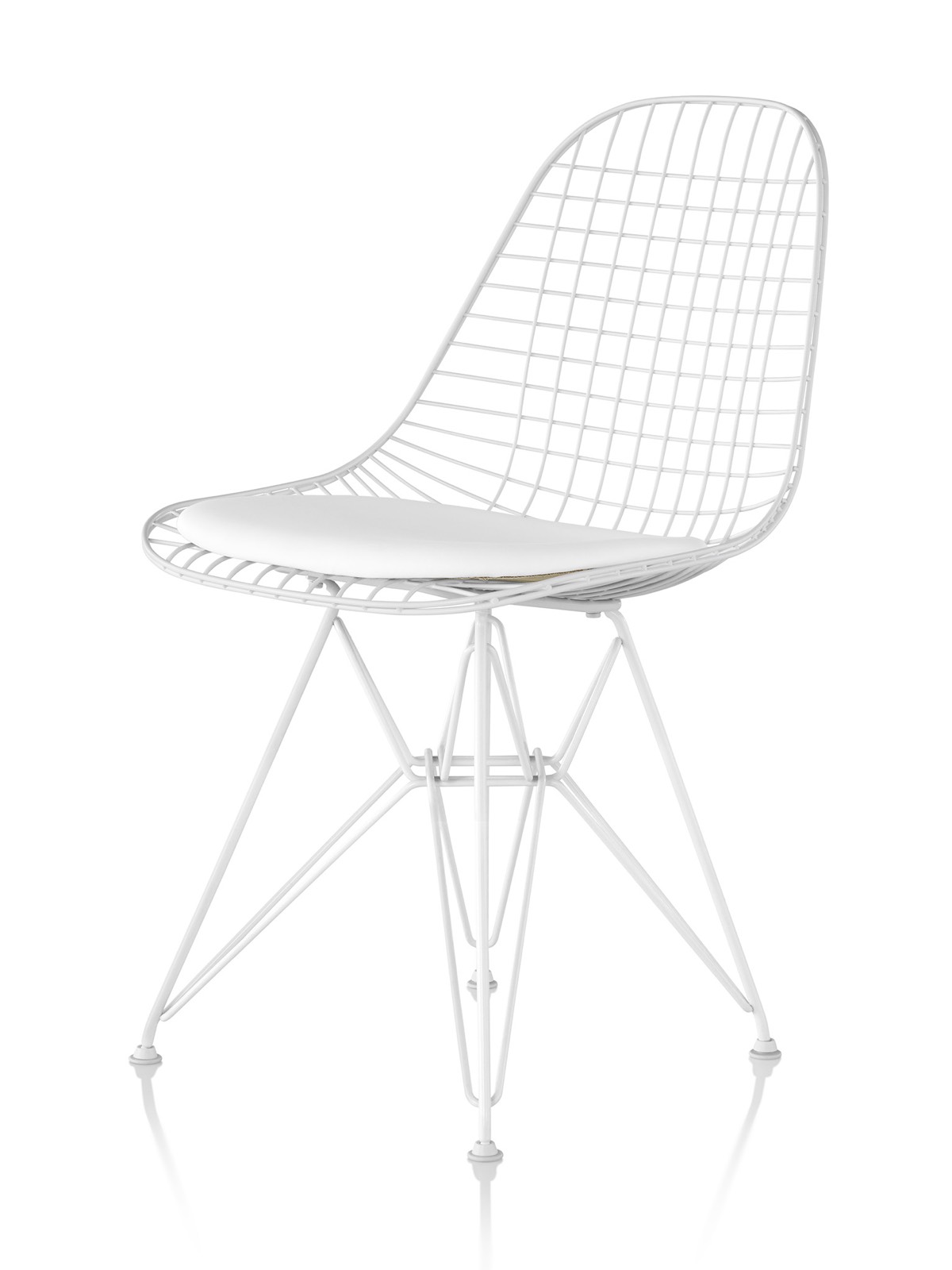
Eames Wire Chairs
Perhaps more than any design in their oeuvre, the shell chair represents the Eames’ disinterest in superficial aesthetics and their agnostic approach to material. What mattered most to them was the integrity of the form, function and context – or as Charles often said: “The best for the most for the least.” It’s this attitude that pushed them to explore the shell chair in a variety of finishes, materials and base configurations.
The Eames Wire Chair is a unique iteration in the shell chair’s continuous evolution. In the 1950s, the Eames Office started experimenting in bent and welded wire. Inspired by trays, dress forms and baskets, the team developed a number of pieces, including the wire version of the single-shell form. The Eames Wire Chair comes with a wire base and an optional full-piece leather seat pad or crisscross, two-piece “bikini” pad; both versions are available in a variety of colours.
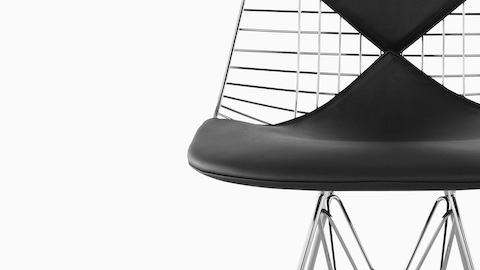
For every need
Charles Eames famously said, “The role of the designer is that of a very good, thoughtful host anticipating the needs of his guests.” With the molded plastic, fiberglass, and wood shell chairs—as well as the wire chair—the Eameses have created a universal response to what everyone wants from a chair: a simple, gracious form that fits any body and every place.
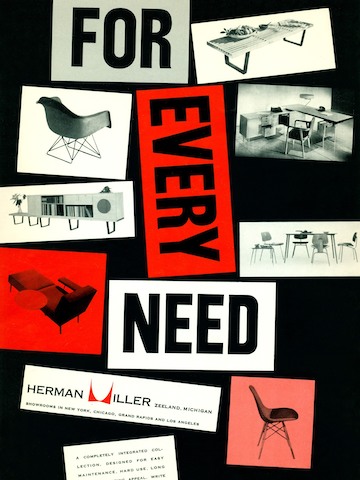
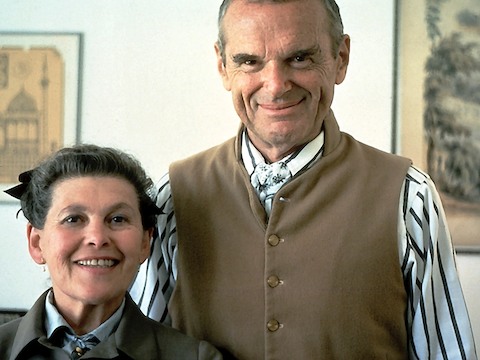
In every way
Borne out of Charles’ and Eero Saarinen’s early investigations molding plywood at Cranbrook Academy in 1939, and continued with Ray at the Eames studio in Venice, California, the molded chair is exemplary of the Eameses’ iterative process and their desire to make “the best for the most for the least.” With each new form, finish, and configuration, the Eameses continued to push the boundaries of what the shell chair could be: after experimenting with single-form plywood and stamped metal, they turned to fiberglass and experimented with bent wire; when fiberglass production proved unhealthy for the environment, the decision was made to switch production to a safer plastic; and now, with advancements in safe fiberglass composition and dynamic veneer technologies, the evolution continues with the Molded Fiberglass and Molded Wood Chairs.
For everyone
The Eames Shell Chair was designed on the principle of adaptability, offering innumerable configurations to serve a wide variety of applications and environments. It’s what makes the chair a classic worthy of museum collections—and living rooms, laundromats, lobbies, and cafés. It’s what makes it a great first piece of furniture to buy in your twenties, that’s still worthy and relevant enough to hand down to your children 20 years later. A diverse selection of shell, base, color, and finish options enable you to create your perfect chair. Just like every person, every chair has a story.
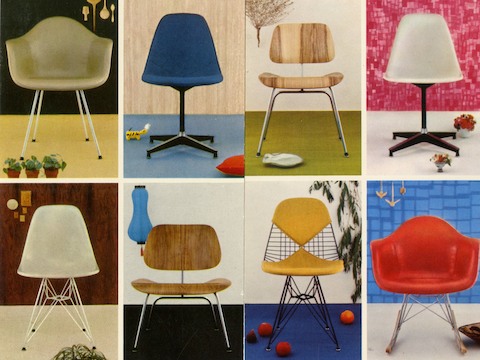
Herman Miller x HAY
Classic Eames designs thoughtfully reimagined by Danish design house HAY.
